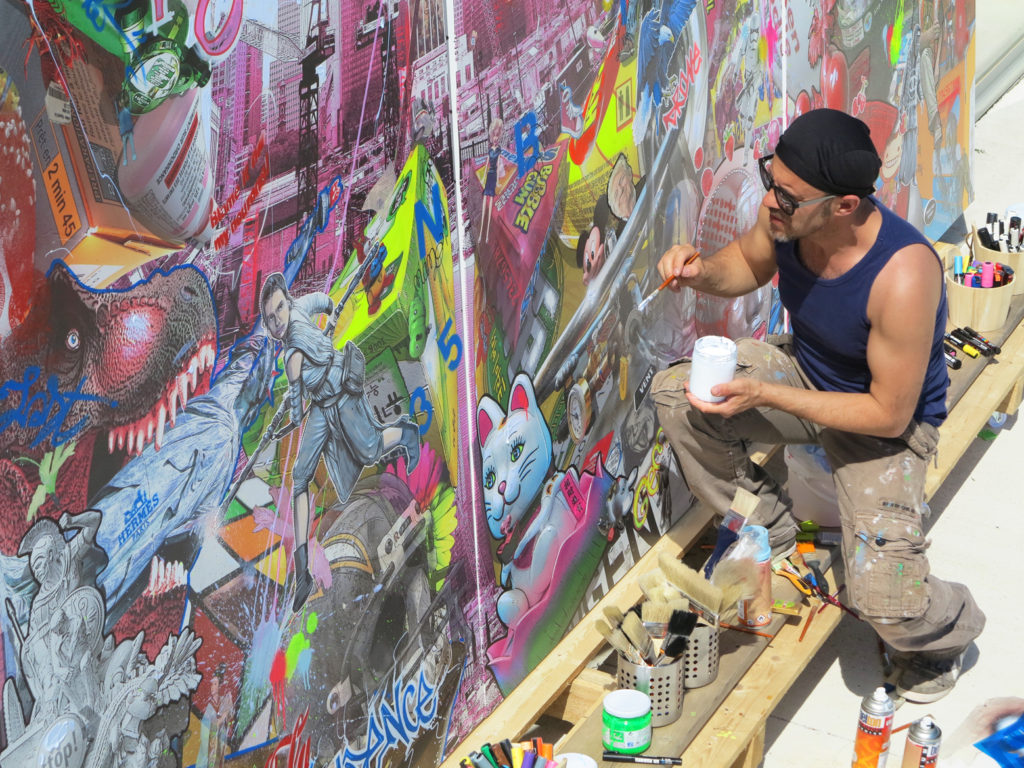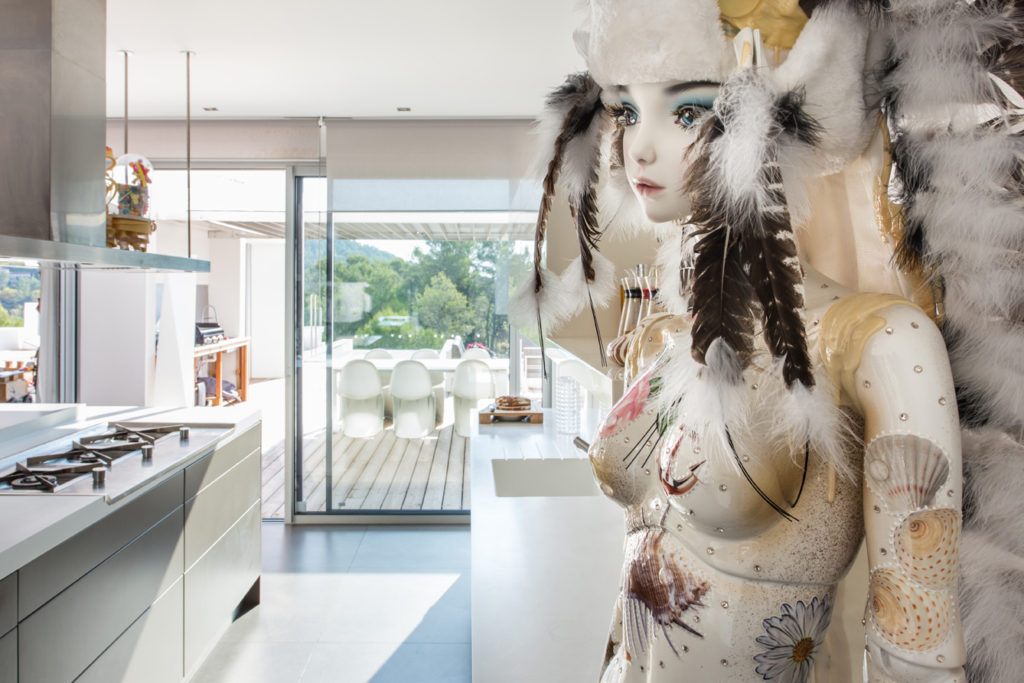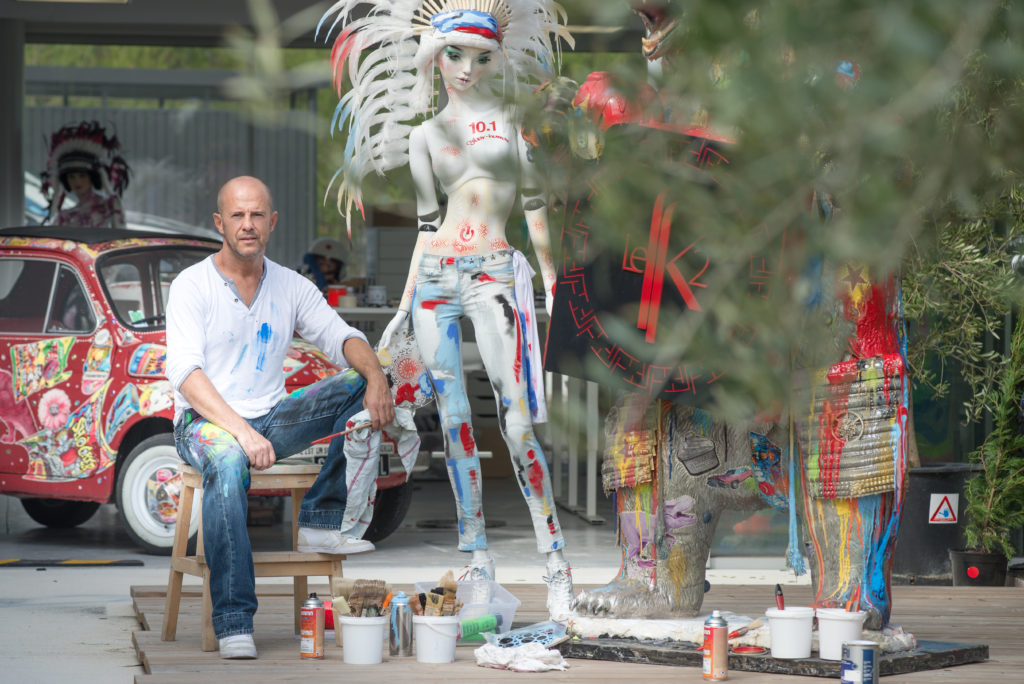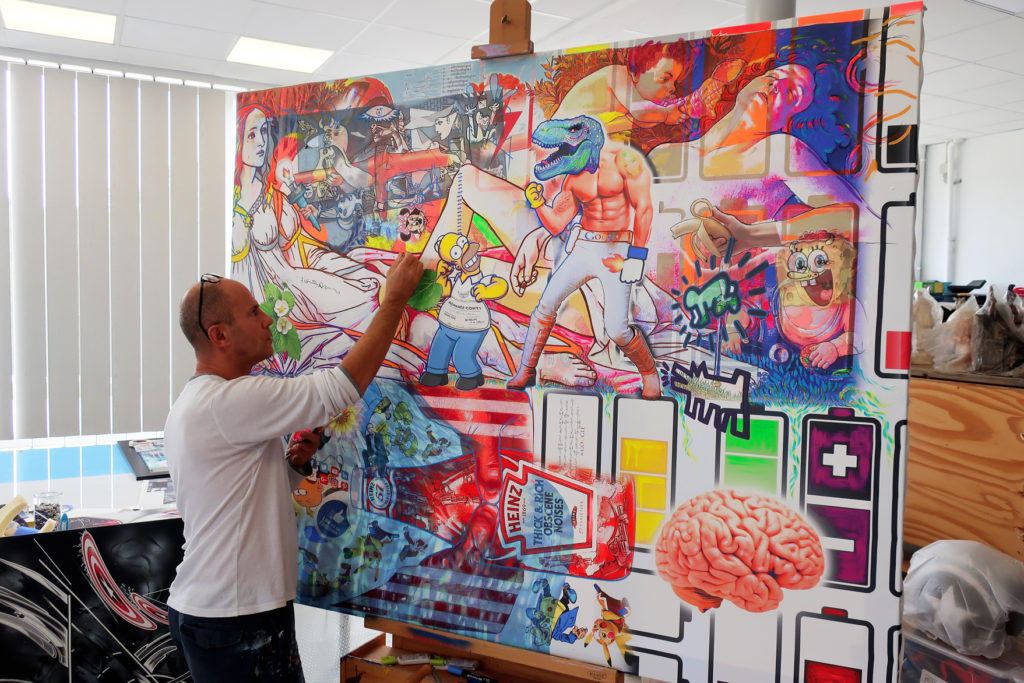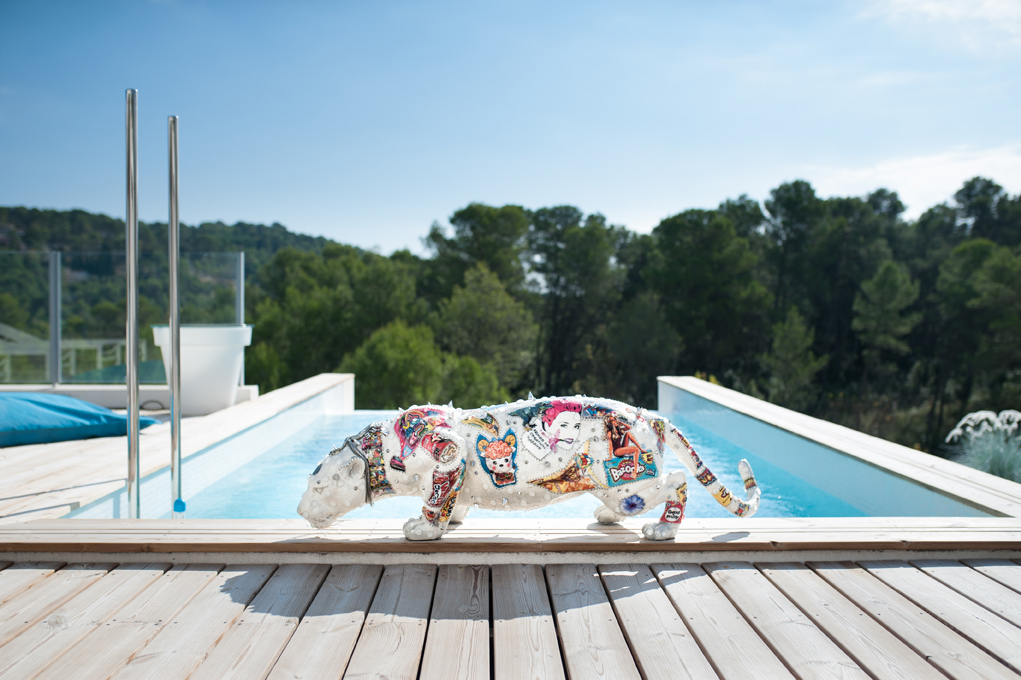“My art reigns inside me but it doesn’t rule me.”
David Cintract, a DJ flipping and spinning images and materials, defines himself as a visual and tactile existential artist. A multi-sensorial creator, he moves with disconcerting ease between traditional painting techniques and modern technologies such as digigraphy, photography and the inclusion in his works of various objects, toys and so on.
With his dandified mannequins, his “Mutantoys” and candy boxes, he breathes individual character into manufactured goods and infuses his own poetic vision into mass-produced objects.
Q: Do you find it easy being an artist?
I see art and philosophy as the best ways for me to lend a more aesthetic flavour to my existence.
Using these two means of expression and reflection, I’ve been able to maximise my tragic optimism and reverse the general neurotic tendency we find in contemporary works of art. My goal is to take more or less serious issues in society and current affairs and to transcribe them into a more democratic and positive register. My approach represents a playful take on futile images andobjects that recall childhood, but all of which are bristling with an obsession about the relationship between ourselves and frivolous consumerism, driven by ceaselessly reinvented advertising. My work makes me wonder whether happiness has not in fact been finally worn itself out in the pleasures of consumption.
Q: Why Pop Libre?
People generally put me in the Pop Art category, which doesn’t really bother me, even if I find the term somewhat restrictive. In fact, I see myself in a more individual type of Pop class, and since it is practically de rigueur to pigeonhole artistic styles, I created the label “Pop Libre”, which suits me very well!
Pop Libre also allows me to distance myself from my “false fathers” in Pop Art, and to maintain close ties with others who have greatly influenced me, namely painters like Rembrandt, Leonardo da Vinci, Courbet and Caravaggio, as well as philosophers such as Epicurus, Spinoza and Nietzsche, amongst others.
Briefly, Pop Libre defines the relationship between my art and myself. In reality, it’s an art of living, a state of mind; the more intense my Pop Libre, the more beauty there is in my soul.
Q: How do you account for the sense of wonder experienced by children and adults alike before
Every day, through my art, I strive to rediscover the spontaneity of my childhood and to reignite this same feeling in as many people as possible.
One of the reasons art has such a powerful effect is because of its ability to give pleasure, and primarily its ability to transport us beyond the bounds of ordinary existence. It gives me great joy to witness my own works achieving this end.
Q: Amongst your vast array of concepts, which of your inventions are you most proud of?
I think some modesty is called for here. We don’t really invent anything; we preserve things, sometimes we make progress, and if we’re not too bad, we occasionally even manage to move things forward a little. The whole concept of modern art was already created practically unwittingly by the artists of the Incohérents movement (1882-1893), but no one speaks very much about them or gives them any credit for their achievement.
Q: In one of our conversations, you told me that the man and the artist form a harmonious opposition. Would you like to expand on that idea?
As I work and develop as an artist, I make everything my own. It is not as a man but as an artist that I develop, and it is this artist who makes me the man that I am. This is the unique meaning of Pop There’s a sort of artistic bipolarity at work here, in the way Nietzsche expressed it, a mixture of the Dionysian (the human side) and the Apollonian (the artistic side). The former releases a spark of artistic expression in me and intensifies my powers of representation while the latter creates a sort of excitation of the eye, clearing away the clouds to illuminate my ideas.
I really love the direct contact I have with my materials.
In today’s art world, it’s difficult to tell whether someone is known because of their talent or because of their public visibility. People have to be seen at all costs, and once in the public view, many become famous for being famous, without the need for talent, resulting in the creation of an elite whose prestige is not always based on any form of “legitimacy”.
We really have to educate ourselves in contemporary art if we are to avoid the tyranny of the “star system” and all the speculation that goes with it.



